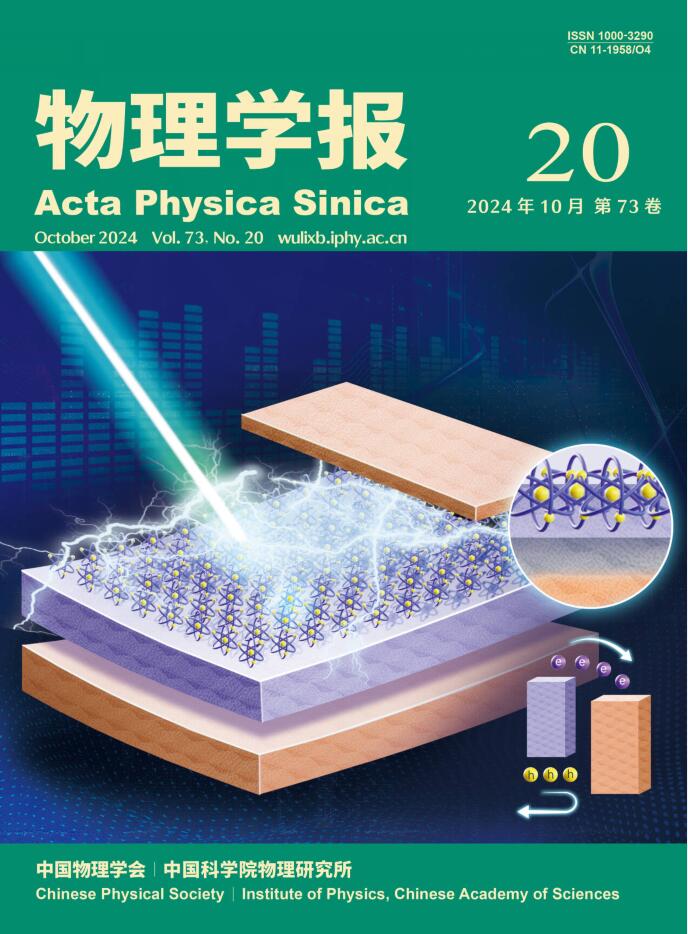基于CHSH不等式的马尔可夫环境下X态的量子非定域检验
IF 0.8
4区 物理与天体物理
Q3 PHYSICS, MULTIDISCIPLINARY
引用次数: 0
摘要
量子非定域性是量子理论最基本的特征之一。“X”态是实验中常用的一种量子态,在开放量子系统的研究中是一种典型的量子态,它在演化过程中仍然保持着“X”形的稳定性。利用clauser - horn - harmony - holt (CHSH)不等式,研究了马尔可夫环境下与局部变换操作相关的两个“X”态的量子非局域性检验。结果表明:在相位阻尼环境下,随着演化时间的增加,两种“X”态的CHSH不均匀性测试结果相同;此外,两个“X”态的量子非局域性检验的最大值将非线性地减小。当0.78F2比Sm1。特别是当F=1时,密度矩阵$\rho _W$的“X”态在演化时间$\Gamma t > 0.22$后无法成功进行量子非局域性测试。对于密度矩阵为${\tilde \rho _W}$的“X”态,要到演化时间$\Gamma t > 0.26$才能进行量子非局域性测试。结果表明,“X”态的局部变换操作更有利于基于CHSH不等式的量子非局域性检验。最后,给出了在相位和振幅阻尼环境下成功测试两个“X”态量子非局域性的保真度范围。结果表明,在量子非局域性测试成功的前提下,在相位阻尼环境下演化的两类“X”态具有较大的有效保真度范围。同时,在相同的演化时间内,局部变换操作有助于提高具有密度矩阵${\rho _W}$的“X”态在振幅阻尼环境下量子非局域测试的保真范围。本文章由计算机程序翻译,如有差异,请以英文原文为准。
Quantum nonlocality testing of the “X” state based on the CHSH inequality in Markov Environment
Quantum nonlocality is one of the most fundamental characteristics of quantum theory. As a commonly used quantum state generated in experiments, the "X" state is a typical one in the research of open quantum systems, since it still maintains the stability of the "X" shape during the evolution. Using the Clauser-Horne-Harmony-Holt (CHSH) inequality, the quantum nonlocality testing of two "X" states associated with local transformation operations is studied under the Markov environment. The results show that in the phase damping environment, the two "X" states have the same CHSH inequality testing results with the increasing of the evolution time. Moreover, the maximum of quantum nonlocality test of the two "X" states will decrease nonlinearly. When 0.78<F<1, the maximum value Sm of testing quantum nonlocality will gradually transition from Sm>2 to Sm<2 with the increasing of the evolution time of the two "X" states, and the research on the quantum nonlocality test cannot be successfully carried out. In the amplitude damping environment, using the "X" state obtained by the local transformation operation have a longer evolution time for the successfully quantum nonlocality testing when F>1. In particular, when F=1, the "X" state with the density matrix $\rho _W$ cannot successfully perform the quantum nonlocality testing after the evolution time $\Gamma t > 0.22$. For the "X" state with density matrix ${\tilde \rho _W}$, the quantum nonlocality testing cannot be performed until the evolution time $\Gamma t > 0.26$. This results show that the local transformation operation of the "X" state is more conducive to the quantum nonlocality testing based on the CHSH inequality. Finally, the fidelity ranges of successfully testing the quantum nonlocality of the two "X" states in phase and amplitude damping environments are given in detail. The results show that, on the premise of quantum nonlocality testing successfully, the two types of "X" states evolving in the phase damping environment have the large range of valid fidelity. Meanwhile, at the same evolution time, the local transformation operation is helpful to improve the fidelity range of quantum nonlocality test in amplitude damping environment for "X" state with density matrix ${\rho _W}$.
求助全文
通过发布文献求助,成功后即可免费获取论文全文。
去求助
来源期刊

物理学报
物理-物理:综合
CiteScore
1.70
自引率
30.00%
发文量
31245
审稿时长
1.9 months
期刊介绍:
Acta Physica Sinica (Acta Phys. Sin.) is supervised by Chinese Academy of Sciences and sponsored by Chinese Physical Society and Institute of Physics, Chinese Academy of Sciences. Published by Chinese Physical Society and launched in 1933, it is a semimonthly journal with about 40 articles per issue.
It publishes original and top quality research papers, rapid communications and reviews in all branches of physics in Chinese. Acta Phys. Sin. enjoys high reputation among Chinese physics journals and plays a key role in bridging China and rest of the world in physics research. Specific areas of interest include: Condensed matter and materials physics; Atomic, molecular, and optical physics; Statistical, nonlinear, and soft matter physics; Plasma physics; Interdisciplinary physics.
 求助内容:
求助内容: 应助结果提醒方式:
应助结果提醒方式:


